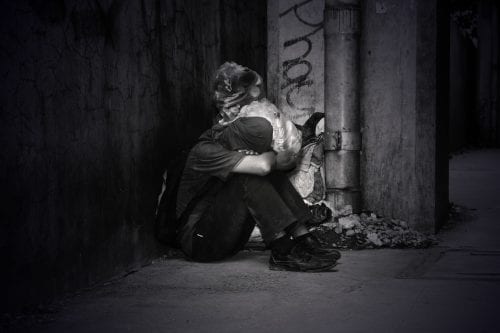
The Foster Care-Human Trafficking Nexus
January 16, 2018
In the United States, January is National Slavery and Human Trafficking Prevention Month. In support of this occasion, the Human Trafficking Search weekly blog seeks to examine areas of the human trafficking crisis that do not typically make the headlines. This week, it focuses on the connection between foster care and human trafficking.
Children in foster care are disproportionately victimized by human trafficking. Despite widespread acknowledgement of the connection between foster care and human trafficking – it is estimated that 60 percent of child sex trafficking victims have a history in the child welfare system – the topic is understudied and thus, not effectively addressed.
The prevalence of human trafficking of children from the foster system stems from a number of factors. While it is well documented that trafficking spans all demographics, ages, and economic statuses, there are a number of risk factors that increase the likelihood of human trafficking for an individual, most of which pertain to foster youth. Human traffickers typically prey on the most vulnerable such as individuals who are isolated and have a history of abuse. Unfortunately, many foster children fit this description as they have experienced sexual, physical, and/or mental abuse prior to entering the system and/or while under protection of the state, and are therefore more likely to be exploited again.
Often without a steady home or school life and without strong support networks, foster youth are at risk for recruitment. Traffickers recruit foster youth directly from group homes with false promises of money and a family structure. Youth who have been conditioned to view themselves as a paycheck, due to prior abuse and exploitation by both biological and foster parents, are at a heightened risk and vulnerable to the increased attention and generous overtures commonly used by traffickers. But not all victims are recruited from group homes.
Homelessness is a key contributor to trafficking of youth. Foster children who have runaway, aged out of the system, or otherwise find themselves on the streets are a greater risk of being trafficked, particularly in the commercial sex trade. Entry into human trafficking often begins with trading sex for essential items such as food and/or shelter, but can quickly evolve to victimization by organized trafficking operations. In a study conducted in the U.S. and Canada one-fifth of homeless youth were victims of sex trafficking. The issue is compounded by the fact that states do not always report when a foster child is missing, despite provisions in federal law that mandate it. LGBTQ+ youth in the foster system are particularly prone to homelessness due to added stigma and discrimination.
Policy gaps and a lack of adequate resources are also responsible for the high prevalence of foster youth involved in human trafficking. While there are federal regulations, foster care policy is primarily the domain of the states and therefore, protections, resources, and reporting requirements vary by state and information is not always effectively shared between agencies and jurisdictions. For example, in most states youth age out of the foster care system at 18 – approximately 26,000 people a year – often leaving them without shelter or support. Foster youth that age out at 18 have high rates of unemployment and incarceration, and one in four women get pregnant before the age of 21. However, after the passage of the Foster Connections to Success and Increasing Adoptions Act in 2008, a number of states – including California, New York, and Texas – have extended the age of foster coverage with federal support. Similar gaps exist across policies toward kinship care, Safe Harbor laws, background checks for foster parents, protections for LGBTQ+ youth, law enforcement response and more.
A comprehensive approach is needed to address the gaps in the system and help provide protections to vulnerable youth. First and foremost, legislation must be strengthened at both the state and federal levels. Human Trafficking Search’s Foster Care and Human Trafficking: A State-by-State Evaluation report details best practices that can help protect children in the foster care system from trafficking. Training and raising awareness of the risks and recruitment tactics of traffickers is also necessary, and has – fortunately – been increasing in recent years. Nevertheless, more must be done. Foster children, parents, and group home leaders, teachers, community groups, law enforcement, hotel staff, and medical professionals should all be trained to identify red flags associated with human trafficking, and be particularly mindful of the added vulnerability of children involved with the foster care system. Ultimately, more resources are needed to strengthen foster care and improve policies that have contributed to the prevalence of human trafficking victims who are in the system. While the anti-trafficking movement and foster care community are large, there are few organizations working at this crucial intersection. Civil society can play a key role by raising awareness about the foster care-human trafficking nexus and advocating for stronger protections on behalf of children around the country.
For more information on the relationship between foster care and human trafficking, read the following research reports from Human Trafficking Search:
- Foster Care and Human Trafficking: A State-by-State Evaluation
- An Unholy Alliance: The Connection between Foster Care and Human Trafficking
Photo courtesy of Alvin Decena.
